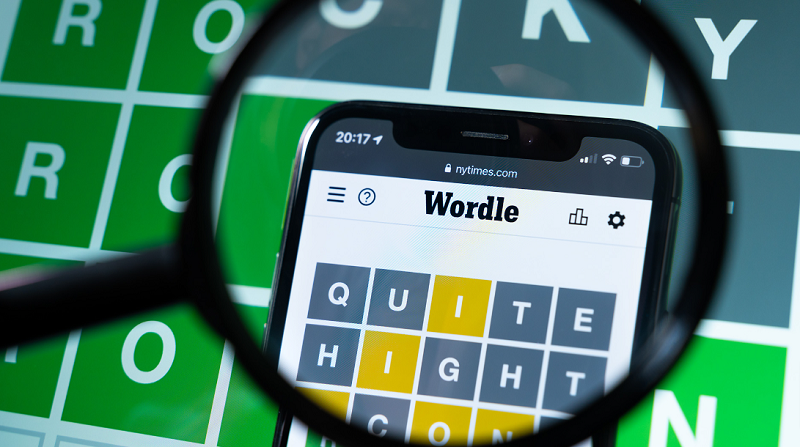Toms Guide to Wordle: Mastering the Game and Enhancing Your Skills
Wordle, the popular online word puzzle game, has taken the internet by storm. What started as a fun pastime has quickly grown into a global phenomenon. Players around the world eagerly anticipate the daily challenge of guessing a five-letter word in just six attempts. With its simple mechanics and addictive gameplay, Wordle has captured the attention of both casual players and competitive puzzle enthusiasts.
If you’ve been hooked by Wordle and want to improve your game, or if you’re new to the puzzle and are looking for some tips, you’ve come to the right place. In this guide, we’ll break down the basics of Wordle, provide strategies for improving your guesses, and give you tips to become a Wordle master.
What is Wordle?
Wordle is a daily word puzzle game where players attempt to guess a hidden five-letter word within six guesses. After each guess, the game provides feedback through color-coded squares:
- Green: The letter is correct and in the right position.
- Yellow: The letter is correct but in the wrong position.
- Gray: The letter is not part of the word at all.
The challenge is to deduce the secret word using these clues, with each guess bringing you closer to the answer.
Wordle is free to play, and each player only gets one puzzle per day. Toms Guide Wordle The game’s simplicity and short duration make it highly addictive, with players returning daily for their word-solving fix.
How to Play Wordle
If you’re new to Wordle, here’s a quick rundown of how the game works:
- Start with a five-letter word. Type any valid five-letter word into the game’s input box. You can use common letters and try to make educated guesses.
- Receive feedback. After you submit your guess, the game will highlight the letters in either green, yellow, or gray to indicate whether those letters are in the word and whether they’re in the correct position.
- Refine your guess. Based on the feedback, you’ll make your next guess. If a letter is green, you know it’s correct and in the right place. If a letter is yellow, you know it’s in the word but in the wrong position. If it’s gray, it’s not in the word at all.
- Repeat until you guess correctly or run out of attempts. You have six guesses to figure out the word.
The key to success in Wordle lies in the use of strategy and logic to make the most out of your guesses. Now, let’s dive into how to play smarter and improve your chances of solving the puzzle.
Toms Guide Wordle Tips: How to Play Smarter
1. Start with a Strong First Guess
One of the most important strategies in Wordle is choosing a great first guess. Starting with a word that contains common vowels and consonants will help you maximize the amount of information you get from your first attempt. Words like “slate,” “crate,” “table,” or “stone” are excellent starting guesses because they contain frequently used letters (like A, E, T, and S), giving you the best chance to identify some letters right away.
A good starting guess allows you to quickly identify which vowels are in the word and where to place them. It can also tell you which letters are definitely not part of the word, helping you avoid wasted guesses.
2. Use Vowels Early and Often
Vowels (A, E, I, O, U) are crucial in Wordle, so it’s important to identify them early. In fact, words with common vowels should be part of your initial guesses. Using words like “audio” or “raise” can help quickly eliminate or confirm which vowels are in the word.
Try to test different vowel combinations in your first few guesses. For example, if your first guess doesn’t include the vowel “E,” try a word with “E” as a primary vowel in the second guess. Understanding where vowels are located will make it easier to guess the correct word.
3. Be Strategic with Letter Placement
Once you know which letters are in the word, it’s time to focus on their placement. For instance, if you guess “stone” and you find that “T” is green (correct and in the right position) but “S” is yellow (correct but in the wrong position), you can try placing “S” somewhere else and keeping “T” in the same spot.
Always look for patterns in the feedback after each guess. If you already know some letters are correct, use those to construct new words that could work. Consider letter combinations that are common in English words—certain letters often appear together, like “TH,” “SH,” and “ER.”
4. Avoid Repeating Incorrect Letters
Once you’ve learned that certain letters are not in the word, don’t waste guesses by repeating them. For example, if your guess reveals that the letter “N” is gray (not in the word), make sure to avoid using “N” in subsequent guesses. This allows you to focus on finding new letters and makes each guess more informative.
5. Keep Common Letter Combinations in Mind
In the English language, certain letter combinations are more likely than others. For instance, “TH” and “ER” are common pairs, so if you find letters in those positions, it’s worth exploring potential combinations early in the game. Likewise, combinations like “CH,” “SH,” or “ST” often appear together in words, so consider them if you have clues about the letters’ placements.
6. Consider Word Patterns
After several guesses, try to think of possible five-letter words that match the known letters. For example, if you know the word contains the letters A, E, and T, and T is in the first position, you might guess “TALES,” “TEARS,” or “PEACE.”
Word patterns are essential for improving your Wordle-solving skills. If you spot a pattern early, you can use it to guide your guesses, narrowing down the possibilities faster. Additionally, once you’ve eliminated several letters, you’ll have fewer options to consider, speeding up the process.
7. Use Wordle Solver Tools
If you’re feeling stuck or want to improve your guess, using a Wordle solver can be a useful tool. These solvers take the letters you know and suggest possible word options that match those constraints. While it’s more fun to solve the puzzle on your own, solvers can be a helpful resource when you’re close to solving the puzzle but need a little extra help.
Advanced Strategies for Wordle Success
Once you’ve mastered the basic strategies, you can start experimenting with more advanced techniques:
- Track Letter Frequency: After multiple games, you’ll start to see which letters appear most often in the solutions. Keeping a mental list of high-frequency letters can help when narrowing down possible guesses.
- Play With Word Families: If you’re stuck on a guess, think about word families or variations of words you already know. For example, if you guess “clamp” and know that “A” is in the word, try using words like “champ” or “cramp.”
- Refine Your Vocabulary: Sometimes, expanding your vocabulary will help you think of more unusual but valid words. This is especially helpful for tough puzzles where common words don’t seem to fit.
Conclusion
Wordle is a game of skill, strategy, and logic. By using the tips and strategies outlined in this guide, you can improve your chances of solving the puzzle in fewer attempts and become a Wordle master. Remember, practice makes perfect, and the more you play, the better you’ll get at spotting letter patterns and guessing the secret word.
So, whether you’re a beginner or a seasoned pro, take these strategies to heart and get ready to tackle each day’s Wordle challenge with confidence!











